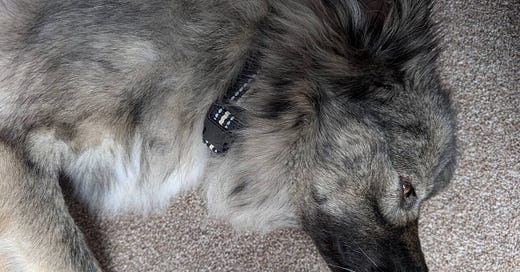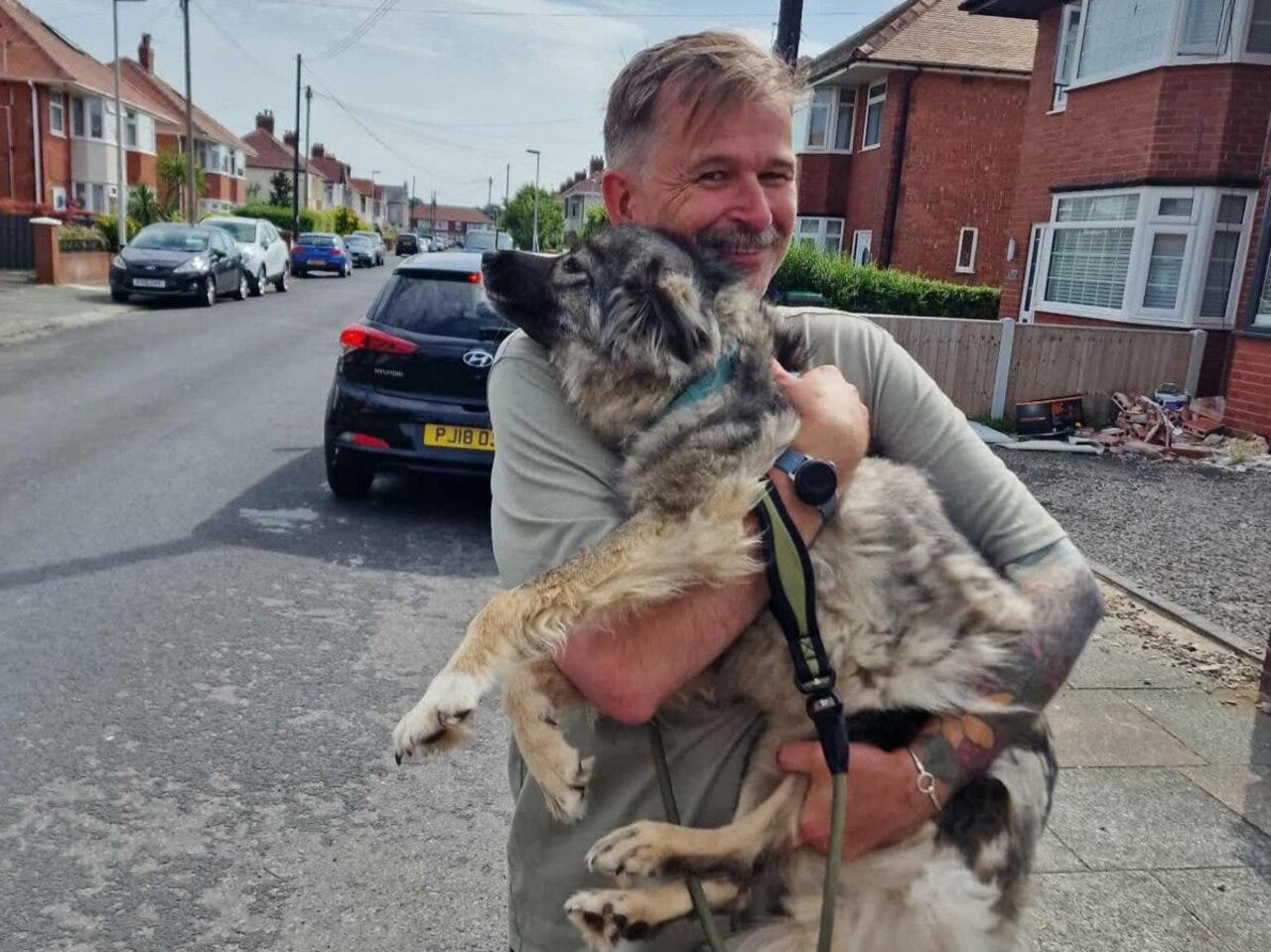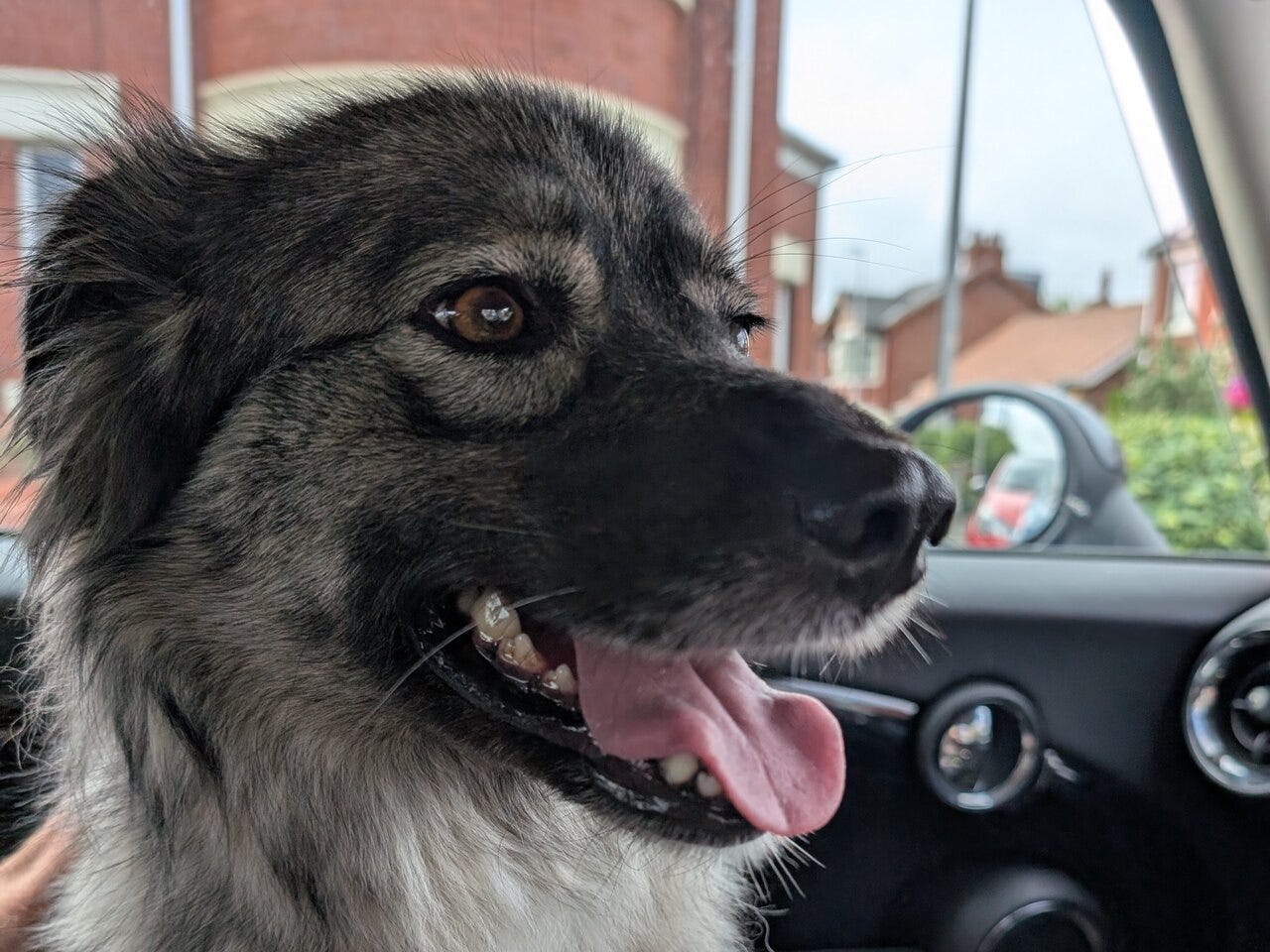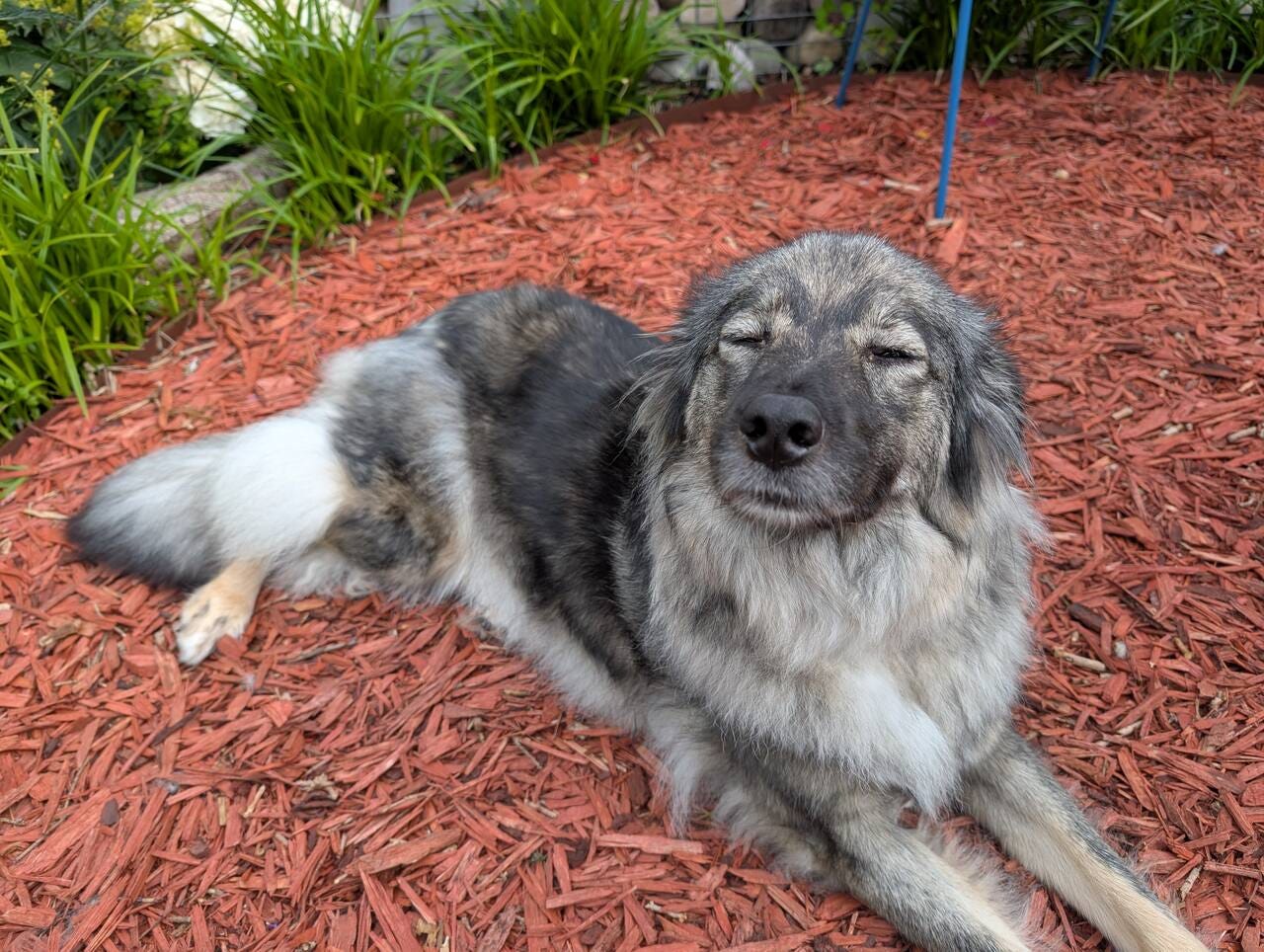Back in January, I wondered if 2025 might be the year I get a dog.
But while I was idly dreaming about a canine companion, one dog’s year started in terror, as she was captured on the streets of Romania and consigned to a kill shelter. Facing certain death, she was rescued by volunteers who committed to care for her while they searched for a new home.
They called her Mera.
After many uncertain months, on midsummer’s day, Mera came home. Getting a new dog turns any family’s world upside down, but this is especially true for a dog who has been rescued from life on the streets. The last few weeks have been an extraordinary learning curve for Mera, me and my partner Karl. But she is safe now, and every breath she takes is a blessing.
As Mera starts her new life with us, I want to tell you about her first steps.
Mera’s story
Mera’s early years are a mystery, but most likely she was born on the streets. Vets estimate she's around three years old. Like most Romanian street dogs, she’s a mixed breed. Her beautiful fur is reminiscent of a Caucasian shepherd dog although she’s much smaller, about the size of a young border collie. Through cold winters and hot summers, she fended entirely for herself. For the first few years of her life, her thick coat was all the protection she had against the wind and rain.
Romania has the largest population of stray dogs in Europe. Under Nicolae Ceaușescu’s communist regime in the 1980s, a push towards urbanisation forced millions of Romanians to leave rural homes and move into small city apartments, often abandoning dogs that they could no longer care for. With few dogs being sterilised, the population exploded. Estimates of the number of dogs vary, but at least 600,000 dogs in the country survive on the streets, living on scraps of food waste and stale bread left out by bakeries.
Romania has struggled to implement effective policies to control its dog population, and successive generations of animals have simply been culled. Currently, street dogs are rounded up and placed in shelters, where conditions can be brutal. If unclaimed within two weeks, the dogs are simply killed.
Mera was rescued from a kill shelter in January. For the first time in her life, she had the security of being loved by humans who wanted her. She began to blossom, showing the potential to be the affectionate and gentle dog we know her to be.
Deciding to adopt
We adopted Mera through Penny’s Ark, a small animal welfare charity based in Southport. The founder, Lindsey Church, established the organisation to provide a sanctuary for animals in need. With a committed team of volunteers - all rescue owners themselves - they match dogs in Romanian shelters with loving homes in the UK.
We didn’t set out to rescue a dog from Romania. Karl and I had been talking about getting a dog for months and explored many avenues. We looked at puppies bred in the UK, but were horrified by uncaring breeders who seemed to put profit over welfare. So we started to look at the possibility of taking on a rescue, and, thanks to an advert on a pet website, stumbled upon Penny’s Ark.
As someone who chairs a small charity managed entirely by volunteers, I know how hard it is to deliver a consistently high-quality service. The whole team at Penny’s Ark has been extraordinary. There was a detailed process, but they took us through it step by step: filling in an application form, a lengthy interview, a virtual home visit, and discussions about the type of dog we were looking for. Once we were matched with Mera, we moved onto the basics of getting ready and making the house and garden safe, with plenty of advice on helping her settle in a new home.
Meanwhile, Mera was getting ready too, with neutering, vaccinations and essential medical care. Finally, she got her pet passport and began her journey across Europe. She was on her way.
Meeting Mera
As we moved through the adoption process, a WhatsApp group kept us up to date with Mera’s progress. Ionela, who cared for her in Romania, sent regular videos and photos, and the whole team was so patient in answering our many questions. In some ways, we felt like we had already met Mera before she arrived. But nothing prepared me for the reality of holding her in my arms for the first time.
Three weeks ago, Karl and I sat nervously on our front wall waiting for her. We had barely slept. Our neighbours came to chat in the hope of seeing her arrive, but the van was delayed. Mera had taken an extraordinary journey across Europe and on the ferry to Dover, and she was one of 25 dogs on their way to a new home. We were stop number seven.
Mera was timid when she was lifted out of the van, but she quickly began to relax. Within a few days, she was responding to her name, learning to sit, going to the toilet in the garden, and loving being fussed over. On the third night we had her, as we were discussing strategies to settle her, she put herself to bed.
It's not all been plain sailing. She can be anxious about food - hardly surprising given that she could never count on there being enough to eat. She looks for hiding places when the world gets too much. The vacuum cleaner bothers her. But, compared to my worst fears, she is an absolute dream. It's been physically exhausting and emotionally demanding, but we are so lucky to have her.
Walking with Mera
As you might expect, one of my biggest motivations for getting a dog was walking with them. It’s not just the fun of them trotting along, sniffing around and enjoying themselves. It’s also the regular discipline of going out, often on the same route, day after day. Whenever I’ve cared for dogs, our daily walks have brought me so much contentment.
But for a dog like Mera, everything about going for a walk is a brand new experience. So, we’re taking it step by step.
Rescue dogs can be easily started and are always a flight risk, so we invested in an escape-proof five-point harness for walking. Fortunately, she’s patient about standing still enough for it to be put on.
Then, there’s getting used to being on a lead. To be honest, this seemed to come fairly easy to Mera. The lead provided another point of connection to build up trust, and even on her first walk, she rarely pulled ahead, preferring to stick close to my feet.
Before she came to us, Mera had lived her entire life outdoors and there’s a wildness in her that we don’t want to fully domesticate. While other dogs stare out of the window on wet and windy days, Mera is straight out of the back door into the garden. She’s unfazed by gusting wind, street sounds and passing cars. All of this is normal to her.
But the biggest issue we’ve had when walking is keeping going. Our first walk along the street lasted ten minutes. There was a lot for her to explore in our first 200 steps together, not least other dogs’ scent on driveways, walls and lamp posts. But as we reached the first corner, she stood stock still. It was far enough. We turned and made our way slowly back.
Managing the balance between anxiety and exposure is challenging enough for humans who can directly communicate their needs, but with dogs, the signs of stress can be more subtle. When Mera is overwhelmed, she simply stops moving. She lowers her gaze and her tail disappears between her legs. Getting her going again takes time, patience, reassurance and encouragement.
I wonder if some of her anxiety about walking comes not from being led somewhere, but uncertainty about whether she will ever get home again. Mera is generally relaxed with people and other dogs, but before us, every human who walked alongside her took her somewhere unfamiliar and sometimes terrifying. Leaving is straightforward. Believing in the reliability of a safe return is something else entirely.
So for now, we’re limiting her walks to a few specific places she can get to know well. We’re exploring nearby streets, and taking trips in the car to the beach. Once she relaxes into those places, we’ll try out other adventures. But I’m in no rush, and neither is she.
Our next steps together
Adoption agencies often manage expectations by talking about 3-3-3: three days to decompress, three weeks to settle, three months to feel fully at home. But recent research on the experiences of adopters suggests that the adjustment period of both dogs and new owners can take much longer. What’s essential is responding to the dog’s needs, giving them time and getting to know them.
Trust is everything, and it can’t be established overnight.
So, as I write this, I don’t know where our next steps together might take us. I would love for Mera to be a dog who loves long walks, camping, playing in rivers and running on the beach. But we are taking things at her pace.
I’ll keep you up to date with her progress. I’m posting updates on Bluesky and in my Substack notes, so do follow along.
Until next month, big love as ever.














She's adorable. I'm so glad you made the decision to have her live with you. May she soon be really comfortably at home with you and Karl and the dog that you hope she will be who is a delight on long walks and adventures.